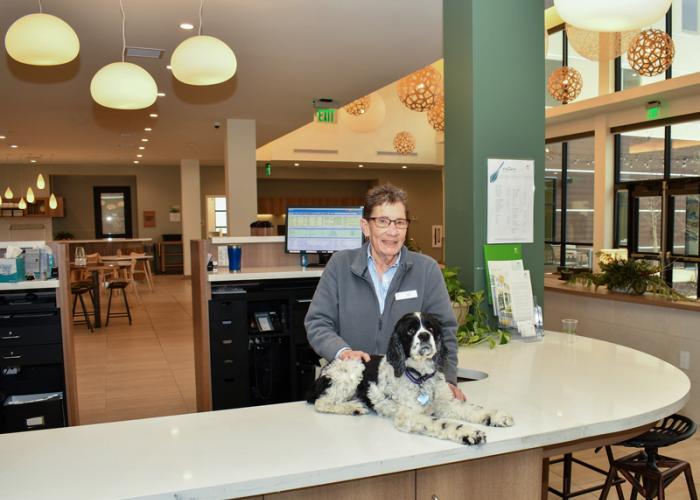Modern shelter design for modern sheltering
With eye-popping upgrade, Santa Clara County's new animal services center finally matches its mission
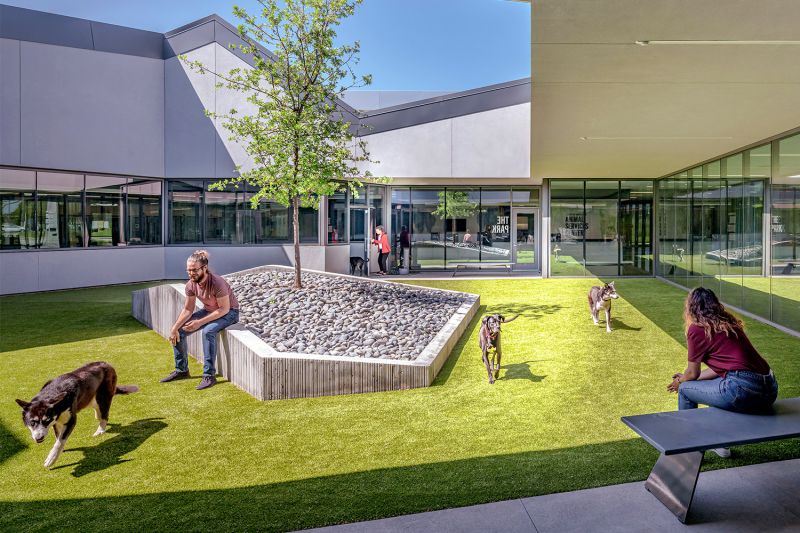
How nice is the new County of Santa Clara Animal Services Center?
Program manager Lisa Jenkins says her 6-year-old daughter wants to be a dog, just so she could stay there.
Located on eight acres in San Martin, California, and loaded with modern amenities, the $38 million, 37,000-square-foot facility is really that inviting.
Key features include an open-air, glass-encased park/dog play yard (with a live oak tree) centrally located inside the complex; “dog dorms” circling the park; cat rooms where felines roam free; a veterinary clinic with two surgery suites; a barn for horses and other livestock; and a multipurpose room for community meetings.
The new building opened in February 2021, replacing the previous shelter, a nearly 70-year-old converted house that the county’s website charitably described as “a modest, outdated, undersized facility.”
Jenkins, who has worked for the county since 2014, agrees that the old building had its challenges: The dogs in kennels faced each other and frequently barked. Disease control was difficult because there wasn’t room to isolate sick animals. There was no turnout space, meaning horses from neglect or seizure cases spent long periods in stalls. The intake lobby was “smaller than a small office,” she says, and the building’s dreary conditions discouraged visitors.
And yet, the old Santa Clara shelter largely overcame its obstacles, finding success by reaching out to donors, volunteers and local rescue groups, and by starting several lifesaving initiatives, such as a barn cat spay/neuter program. In 2018, the shelter’s live-release rate exceeded 94%, which Jenkins labels “amazing” for an open-intake shelter.
“We always referred to ourselves as the little shelter that could,” she says. “We had really phenomenal success, even being in that little, tiny building, which made everything more and more difficult.”
The county’s focus on community-centered animal services hasn’t shifted, Jenkins says, but the new facility is a game changer. “We still have a lot of the same philosophies. We’re just not challenged by the building,” she explains. “Now, it complements what we do.”
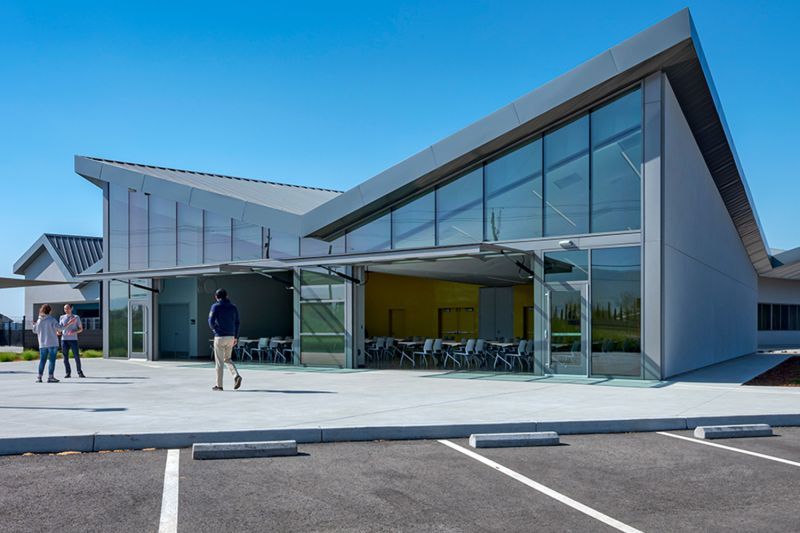
Laying the groundwork
For years, Jenkins says, shelter staff took local elected officials on tours of the old shelter, pointing out how inadequate it was. The officials found the conditions eye-opening, and a consensus grew that a new facility was needed.
Eventually, the animal services team got lucky: A jail project came in under budget, leaving the county with surplus funds. “There was this big pot of money, which you don’t get too often,” Jenkins says. “Because we had laid all the groundwork and done all of our tours in advance, and everyone was very well aware that [the old building] was unsuitable, it was a very obvious choice to fund the shelter.”
The fact that the county wanted a services center rather than a warehouse-style facility appealed to Dreyfuss + Blackford Architecture, the California-based firm that got the design contract.
“We’re getting away from even calling it a shelter at all, just because it’s so much more than that,” says project designer Chris Avanzino.
The firm sought to design a facility that is both functional and eye-catching. The new facility is off a highway, in a rural area between rapidly growing communities to the north and south. The site “was not a place that would be a destination for someone to go visit,” says Dreyfuss + Blackford project director Jason Silva, “so we felt there had to be something remarkable about the architecture.” The design wound up being honored by the local chapter of the American Institute of Architects.
Dreyfuss + Blackford staff toured several animal shelters, noticing that potential dog adopters are often expected to walk down a straight hallway of kennels. “But a lot of times, the dog that’s at the end of that hallway never gets looked at, because you never make it to the end,” Avanzino says.
To remedy that at the Santa Clara facility, the firm placed the three pods of dog kennels around a centralized park to encourage visitors to loop through the building. In addition, there are nooks between the kennel pods where people can pause and look out a window. “You don’t have that same issue with the dog at the end of the run,” Avanzino says, “because it’s just this big circle with various locations where you can stop and take respite.”
“It’s like IKEA,” quips Dreyfuss + Blackford project manager John Zorich. “They make you walk through the whole store.”
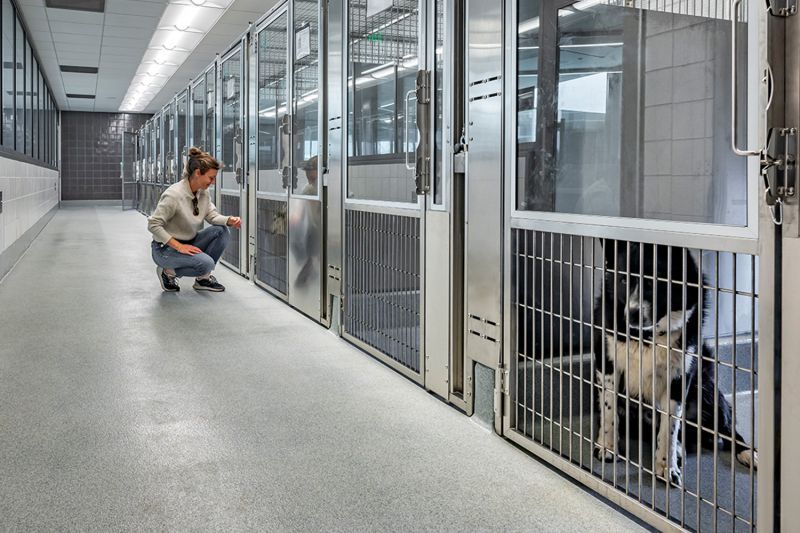
Not just bells and whistles
Jenkins couldn’t be happier with both the look of the new shelter and the impact it’s had on services.
The facility has plenty of glass, which creates a multilayered effect, she notes. Standing outside the entrance, you first see the building’s glass front, and behind that you see the park, also surrounded by glass. “So even as you’re approaching, you’re seeing dogs play and have fun in that park area right away.”
As of January 2022, the center, which takes in about 5,000 animals a year, had adopted out about 500 more cats and 100 more dogs than it had at the same point in the previous fiscal year. Jenkins attributes the increases to a more welcoming facility that makes it easier to see the animals. Since nearly every adult cat is in an airy, free-roam space rather than a cage, potential adopters get a better sense of their personalities. Dogs who might not show well in a kennel, she adds, can meet their potential new families in the central courtyard.
The new facility’s veterinary clinic has two complete surgery suites, allowing the center’s two veterinarians for the first time to work at full capacity. With more lab equipment on site, the clinic can handle more veterinary work in house. The clinic offers free, same-day spay/neuter for community cats from several towns and the largely rural unincorporated areas of Santa Clara County, helping healthy, free-roaming cats avoid unnecessary stays in the shelter, Jenkins notes.
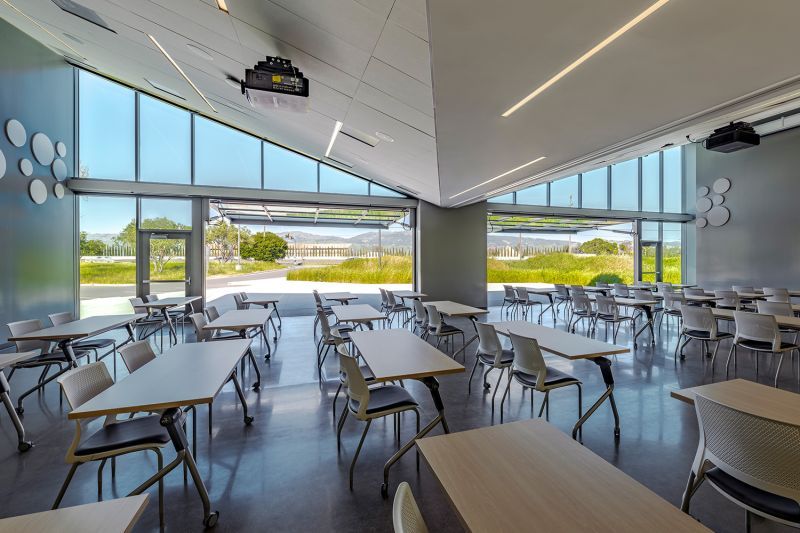
The community center is unique in the San Martin region, giving the facility the ability to host humane education and pet care trainings, but Jenkins says she’s even more excited about the other opportunities it presents.
“We’ve already gotten a ton of requests from folks that are totally unrelated to animal services that want to use the space,” Jenkins says, “and that brings in a lot of people who wouldn’t otherwise go into a shelter.” Potential adopters or donors who might consider shelters sad places could attend a community meeting and find themselves wandering the hallway, meeting the animals. The multipurpose room has been used as a COVID-19 vaccine and testing site and as a voting center.
“It’s way far above and beyond what I ever imagined it could be,” Jenkins says of the new animal services center. “We were just hoping to get something a little bit nicer and more functional for the animals, but it’s really exceeded expectations.”



